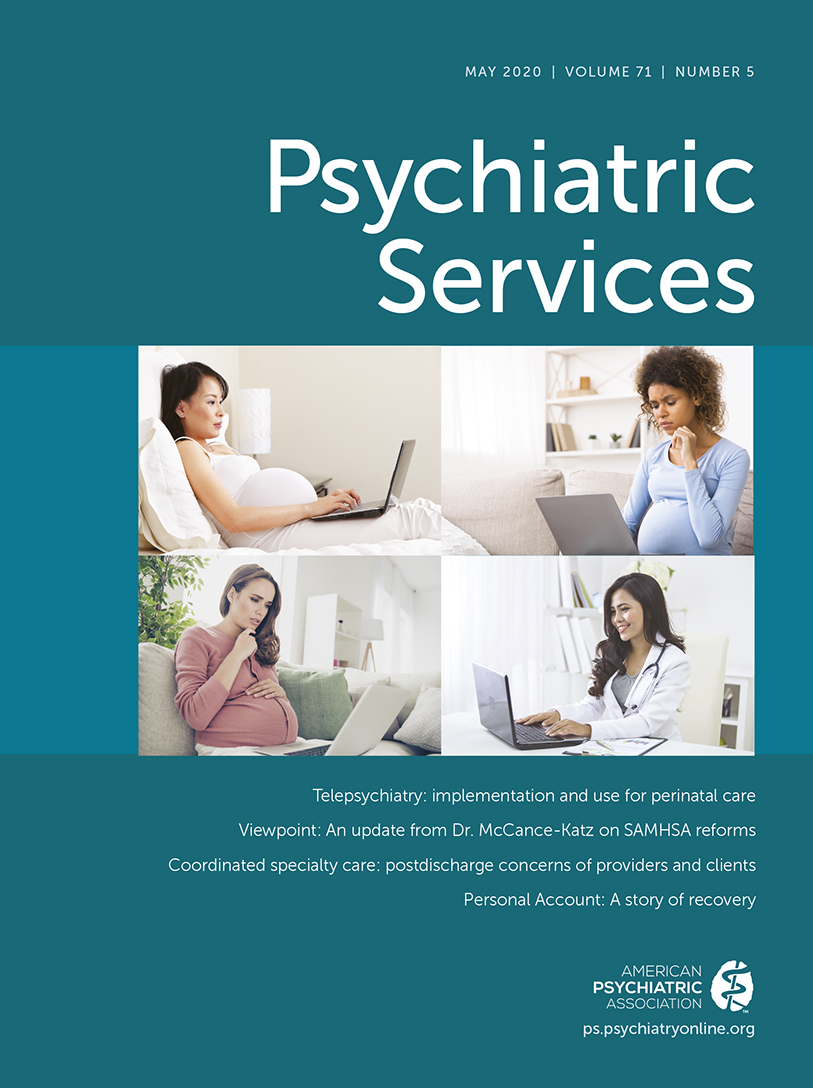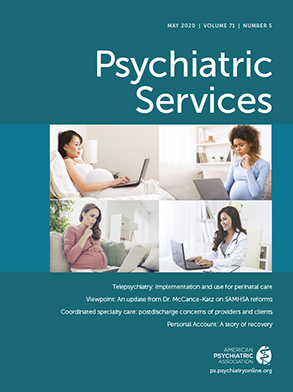The role of the psychiatrist in preventing conflicts and violence that lead to the use of seclusion and restraint (S-R) in inpatient settings has never been clearly defined. Instead, it has been determined by individual practice and the policies of the treating psychiatric facility. Lack of a systematic psychiatric approach to these conflicts makes it difficult for behavioral health settings to make use of psychiatric leadership expertise and makes collaboration on these issues with nursing staff difficult as well.
In inpatient and residential care facilities, psychiatrists are responsible for writing orders for the use of S-R—often after the fact, because of the 24/7 nature of these programs’ operational hours and debriefing the patient—and for serving as treatment team leaders to direct the development of individualized care plans, including those that address the repetitive use of S-R. Beyond these functions, federal standards and the Joint Commission do not designate a role for psychiatrists in the prevention of S-R use (
1). However, more opportunities to utilize psychiatric knowledge and management skills are offered to practitioners in the evidence-based practice model, the Six Core Strategies to Prevent Conflict, Trauma and Violence (6CS) (
2). A brief historical review will show how this new option aligns with traditional psychiatric oversight of these processes.
History
Psychiatrists’ involvement in the prevention of S-R abuse found expression in Philippe Pinel’s 1794 “Treatise on Madness.” During the subsequent 200 years, psychiatrists managed asylums for the mentally ill and, in that capacity, sought either to abolish or mitigate the harms from these procedures (
3). Fisher’s review in 1994, highlighted the physical, psychological, and traumatic dangers of S-R, along with its use in protecting patients and staff from imminent assault (
2). His survey identified three elements central to reducing their use: facility culture, staff training, and physician leadership and monitoring. These were expanded upon in recent S-R reduction programs (
3).
In 1997, Charles Currie, then-deputy secretary of the Pennsylvania State Office of Mental Health, defined S-R as “treatment failure” and “challenged the [state] system to eliminate their use and find more positive ways of supporting a patient in crisis” (
4,
5). In our opinion, he reframed the debate about harms and benefits of S-R by espousing, instead, the creation of evidence-based alternatives. The
Hartford Courant reported the deaths of 142 patients over a 10-year period that were due to S-R, and the Joint Commission publication of annual S-R morbidity and mortality also validated his assessment.
The Psychiatrist’s Role in the Post-Currie Era
Since 2001, the federal rules governing the use of S-R focused on nursing staff training, documentation requirements, and treatment team responsibilities. Although psychiatric leadership was apparently assumed, the only mandated physician element was “the one-hour rule,” requiring a face-to-face doctor-patient review after S-R events. In 2007, trained nurses were allowed to conduct these reviews as long as the psychiatrist saw the patient within 24 hours of the S-R event.
The Medical Directors Council of the National Association of State Mental Health Program Directors also supported the use of S-R alternatives and developed three toolkits for use in the behavioral health field from 1999 to 2002. It embodied the public heath prevention model as its organizing focus and was incorporated in the 6CS training programs for guiding safe patient and staff practices.
In this context, the public health prevention model was adopted as a framework for guiding safe patient practice. Primary prevention efforts entail the development of trauma-informed environments within inpatient and residential programs through staff and patient engagement. They focus on communication and relationship skills that address patients’ concerns and needs while defusing triggers to violence. Secondary prevention activities address unanticipated behavioral crises through de-escalation programs, sensory modulation strategies, and individualized emotional self-regulation safety plans. Tertiary prevention efforts rigorously analyze S-R episodes to find new prevention strategies to be added to the patient’s treatment plan. They also seek to mitigate the emotional consequences of S-R episodes, such as patient debriefings, apologies where appropriate, and staff-patient engagement to repair damaged treatment alliances.
As this brief review has documented, the role of the psychiatrist over the past 200 years has evolved from controlling S-R policy to being part of a treatment team that utilizes psychiatric leadership and knowledge, meeting the regulations of the Centers for Medicare and Medicaid Services (CMS), and influencing the S-R prevention culture in their respective facilities (
6).
The 2005 special sections of this journal highlighted these public health schemata with articles about evidence-based strategies to reduce S-R episodes and their attendant injuries and proposed an expansion of the 6CS program in one facility.
Specific Examples
Psychiatric leadership was critical to reducing S-R in the following programs.
The Pennsylvania State Hospital S-R program, from 1990 to 2000, reduced hours of seclusion from 4.2 to 0.3 per 1,000 patient days and hours of restraint from 3.5 to 1.2 per 1,000 patient days. Factors associated with these changes included identifying S-R as treatment failure, leadership by psychiatrists in collaboration with other clinical and administrative staff and community representatives, psychiatric emergency response teams, and antipsychotic medication (
5).
The New York State Office of Mental Health’s Positive Alternatives to Restraint and Seclusion program used the 6CS of trauma-informed care in its child and adolescent inpatient and residential programs and showed a decrease in the use of S-R ranging from 50% to 80% over 4 years, coupled with an increase in treatment options as alternatives (
7).
In responses to the information emerging from these successful S-R prevention strategies, CMS recently reported consistently low levels of S-R from the facilities that it monitors (
8).
However, despite these gains, patients are still being subject to S-R abuse, and patients are still dying during restraints (
9). What else can be done to foster S-R alternatives? To us, one of the places to intensify our prevention efforts is through defining and encouraging more involvement by psychiatrists in these efforts, on the basis of their legal and ethical responsibility for safe and beneficial evidence-based care.
Roles for the Psychiatrist in Reducing the Use of S-R
The 6CS offers opportunities to psychiatrists in each of its components to improve patient care through minimizing S-R and maximizing alternatives. It is a widely studied model of which we have first-hand knowledge, with one of us having spent over a decade in developing, teaching, training, and implementing its curriculum.
6CS Components
Leadership toward organizational change.
Executive leaders, including the psychiatric medical director must agree to using all the six core strategies in their facility (or facilities). The focus on decreasing S-R will bring different points of view based on the participants responsibilities for patient care. The administrator might focus on the facility’s (or facilities’) responsibility for providing safety in behavioral crises; the nursing staff regarding the effects of S-R staff and patients; and the psychiatrist, highlighting the impact of S-R on patient treatment, as reflected in regulatory responsibilities such as those of CMS, and ethical issues such as autonomy, beneficence, and justice. The synthesis of these viewpoints ought to provide a best-practices road map for all staff that is disseminated through daily discussions, shift reports, and treatment team meetings.
Use of data to inform practice.
Psychiatrists and other executive leaders can use data to measure and support treatments that reduce the use of S-R and improve patient satisfaction with care. Information that is relevant must be based on extensive knowledge of ward functioning and must be used to promote collaborative patient-staff working relationships and to identify supervision and training needs.
Workforce development.
All facility staff must be trained on strategies to avoid the use of S-R and to promote alternatives. Psychiatrists, unfortunately, as far as we can determine, lack a uniform S-R training curriculum, because most training is provided by the facility in which their patients reside and, therefore, varies from one facility to another (
9). Because of the unique role of the doctor-patient relationship, residents would benefit from training by psychiatric faculty in a comprehensive biopsychosocial context that explored the institutional use of S-R and its alternatives. Faculty teaching would enhance the value of the training, especially if it stressed the need to work across disciplines to produce changes in S-R, developing new reduction strategies, and promoting a leadership role for residents in training direct care staff and the management of behavioral crises.
Use of S-R prevention tools.
Rating scales—for example, the Brief Rating of Aggression by Children and Adolescents, (BRACHA)—predict violence potential in children over the age of 9 and could be used to identify high-risk children. Trauma rating scales can provide retraumatization risk information for patients with acute stress disorder and posttraumatic stress disorder symptoms, especially if they are based on prior S-R experiences.
Inclusion of patients and family.
Information from meetings with patients with previous S-R experiences and their families can be used by psychiatrist-medical directors and by psychiatrists who provide direct care to individual patients to share insights from these discussions with their treatment teams. Hopefully, this would result in an increased awareness of the patient’s perspective on S-R and improvements in patient-centered care.
Rigorous debriefing.
Debriefings are opportunities for psychiatrists to demonstrate leadership in interpreting the patient’s view and actions that prompted a restraint and what alternatives could be used. They could emphasize, in post-restraint processing, the effect of each S-R episode on both nursing staff and patients as well as tertiary prevention opportunities. Videotapes of the S-R incident can be used as clarification and teaching tools and to identify abuse and misuse.
Chemical Restraint and the 6CS: A Target for Investigation
The CMS defines chemical restraint as the limitation of a patient’s freedom to participate in activities mainly because of sedation (
6). The 6CS model does not currently address the use of medication as restraint in its scope of monitoring. However, chemical restraint would appear to affect patients in the same way as physical restraint and seclusion and needs to be monitored. This topic could benefit from further discussion and investigation.
Conclusions
The 6CS is an effective program for the reduction of S-R based on its many successes in various clinical inpatient and residential programs (
10). The 6CS’s effectiveness is measured in terms of data that each program collects on individual and ward S-R rates as well as on individual patient and staff injury reduction.
The involvement of psychiatrists in 6CS programs has many benefits to its practitioners and their patients. It provides a window on the staff management of S-R events as well as the opportunity to share psychiatric knowledge and gain the perspectives of other members of the unit leadership team. It can increase communication with patients and families about behavioral crisis management. In the end, it is a best-practices strategy to improve patient care and prevent harm.

